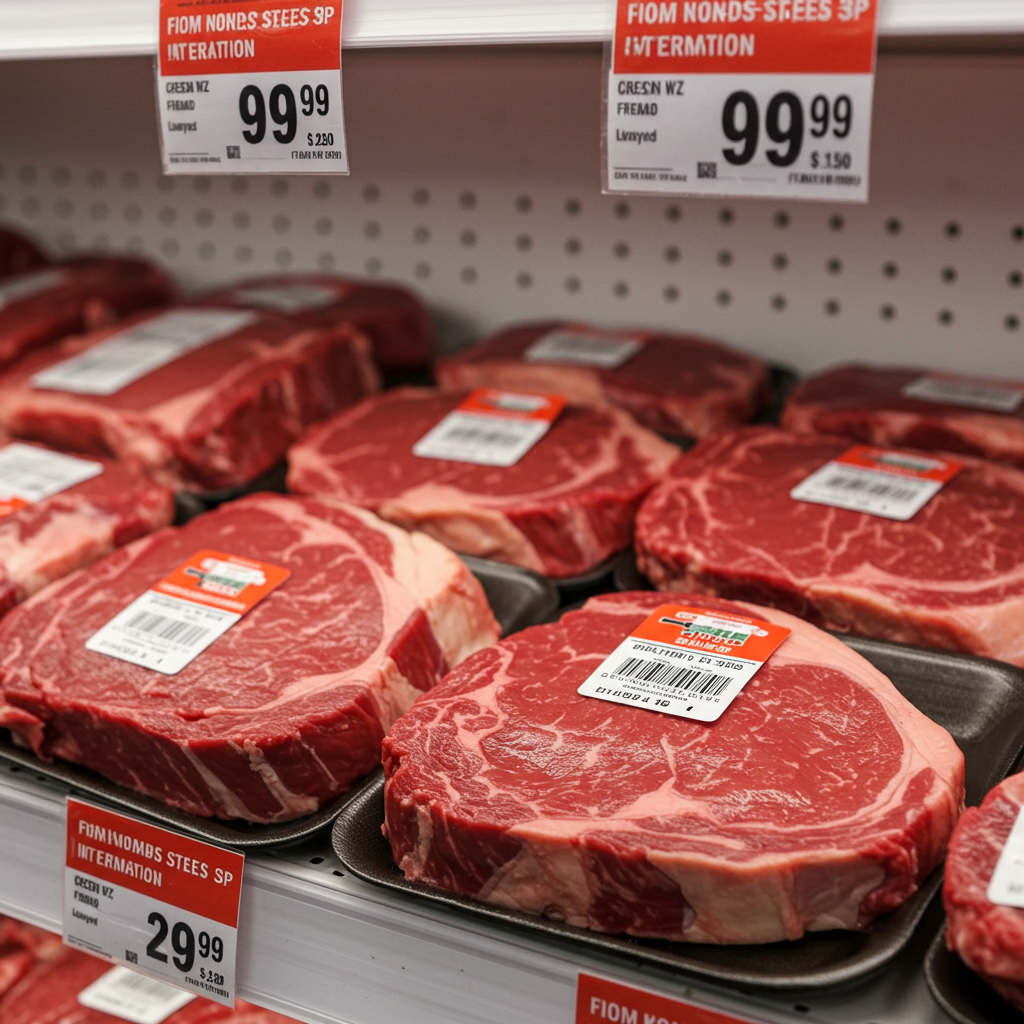UK food inflation has reached its highest point in a year, primarily propelled by significant increases in the cost of beef and fresh produce. New industry data reveals food prices rose by an annual rate of 2.8% in May, marking the highest level seen since May 2024, when inflation stood slightly higher at 3.2%.
This recent surge is having a noticeable impact across the supply chain, from farms to dinner plates.
What’s Behind the Rising Beef Prices?
Experts across the farming and meat processing industries point to a classic imbalance between supply and demand as the core issue driving beef costs to record levels.
Tight Supply: There is currently an estimated 5% shortfall in cattle available. Industry bodies like the British Meat Processors Association (BMPA) describe a “real struggle” for the sector to keep pace with demand. The Agriculture and Horticulture Development Board (AHDB), funded by farmers, confirms that UK cattle prices have seen “unprecedented levels” of increase since the beginning of 2025.
Growing Demand: While the supply is constrained, consumer demand has seen a modest 1% increase. This combination of less product available and slightly more demand is a potent recipe for price hikes.
Record Farm Costs: The price farmers receive for beef is currently at historic highs, according to the BMPA. This high “base product” cost inevitably filters down the supply chain.
Rising Operating Expenses: Businesses face increasing costs beyond the raw product price. Steakhouse co-founder Tomas Maunier noted a roughly 20% rise in his company’s beef costs over the last year, with a significant portion occurring in the last six months. Retailers are also absorbing higher operational expenses, including increases to the national minimum wage and employer National Insurance contributions.
- Government Policy Concerns: Some industry representatives suggest that government schemes may not be adequately supporting beef production, potentially favouring environmental initiatives instead, which could be contributing to supply limitations.
- https://www.bbc.com/news/articles/ckg41n37990o
- https://www.bbc.co.uk/news/articles/ckg41n37990o
- http://www.ers.usda.gov/data-products/food-price-outlook/summary-findings
- https://www.aol.com/beef-drives-food-inflation-fourth-092825270.html
- https://ca.news.yahoo.com/beef-drives-food-inflation-fourth-092825233.html
Impact on Businesses and Shoppers
While farm-gate and wholesale prices are at record levels, the full impact is not always immediately passed on to the consumer. Businesses like Fazenda steak restaurants have absorbed much of the increase but have still had to pass on about 2% of overall rising operating costs to customers.
However, the head of the British Retail Consortium (BRC) acknowledges that consumers who enjoy red meat “may have noticed their steak got a little more expensive” this month. The consensus is that given the sustained high costs at the start of the supply chain, further price increases reaching the shopper are unavoidable.
In summary, the current peak in UK food inflation, the highest in a year, is significantly influenced by soaring beef prices. This rise is a complex interplay of reduced cattle supply, persistent consumer demand, escalating costs for businesses, and record prices being paid to farmers – factors that are collectively pushing up the cost of goods at the grocery aisle.



